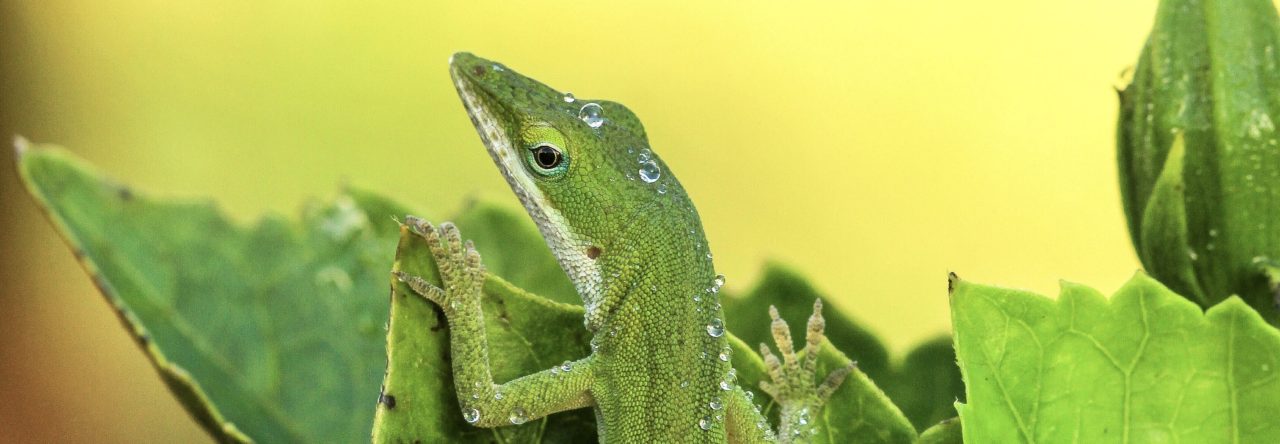Liam Revell gave a talk entitled “Placing cryptic, recently extinct, or hypothesized taxa in an ultrametric phylogeny using continuous charater data: a case study.” The title pretty much says it all and is a report on an ongoing project conducted with Luke Mahler, Graham Reynolds, and Graham Slater (sorry, I failed to think of anything clever about two authors named Graham. S’mores, anyone?).
The problem being addressed: we have a phylogeny for a group and want to add a taxon for which we only have continuous data, such as leg length, etc. How can we place it on the tree?
The details are too technical for me to summarize (note: if you want to get to the good, anole stuff and don’t care about the method, skip to the next paragraph), but entails using a likelihood formula that Felsenstein developed for building trees with continuous characters (another note: you must have continuous characters for all taxa). The method works by considering all possible placements of the missing species. It computes the likelihood of the model and tree conditioned on the dataset to find the maximum likelihood tree including the taxon of interest that is consistent with the tree based on nuclear data for the other taxa (note that the tree must be ultrametric). Liam reported that even for trees with 100 or more taxa, an approximately exhaustive search for the ML position of the tip taxon is possible. Because the tree is ultrametric, all we’re interested in is where the attachment on the tree occurs, because the branch length is then determined by the ultrametricity of the tree.
Now for the good stuff: the method was illustrated with regard to Anolis roosevelti, the feared-extinct crown giant anole of the Puerto Rican bank. Known from only eight specimens and last collected in the 1930’s, things don’t look good for roosevelti. It has been assumed to be closely related to the Puerto Rican crown-giant, A. cuvieri, which it does look like. Moreover, Steve Poe’s morphological phylogeny supports this placement.
The analysis can reject many potential placements of roosevelti, but many others are not ruled out statistically; i.e., the likelihood surface is flat particularly close to root of tree, not surprising given the extensive morphological convergence of anoles. However, for what it’s worth, placement of roosevelti as a close relative to cuvieri is ruled out.
It will be interesting to see how this project develops and whether these results hold. More importantly, someone needs to go out and find a living roosevelti.
- Evolution in Real Time on Lizard Island - March 23, 2025
- Spider Snags Adult Anolis osa - March 22, 2025
- An Homage to the Green Anoles of New Orleans - March 21, 2025





Martha Muñoz
“locate.yeti” was pretty much the highlight of the afternoon.
Liam Revell
Great summary. Thanks Jonathan.
One big asterisk that I didn’t have time to talk about regarding the “ruling-out” of a close relationship with A. cuvieri is that the likelihood ratio test that I used for that is based on assuming that constraining the phylogenetic position to one edge of the tree consumes one degree of freedom, but this may not be correct. The best way to assess this is probably to obtain a null distribution of the test statistic via simulation, which I have not yet done. My guess is that in the end we may will not be able to reject that phylogenetic position for A. roosevelti based on these data.
– Liam
Skip Lazell
I really believed I could find roosevelti in the BVI: lots of great stories and putative sight records…. But after 30+ years I think it’s hopeless! Skip